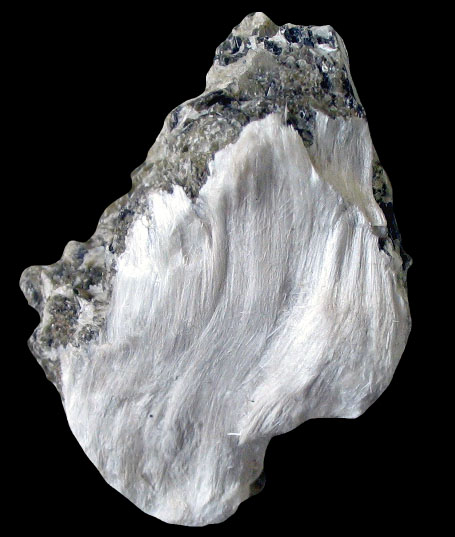 |
| naturally occurring asbestos |
When choosing materials to use in our build we try to choose the most sustainable. Sustainable living means making best use of available resources, aiming for the smallest negative environmental and social impact possible. This is more complicated than simply using 'natural' materials.
I think the terms 'natural building' or 'natural materials' are unhelpful. The presumption is that natural is good, artificial is bad. 'Natural' is often used interchangeably with 'sustainable'.
Even before questioning whether it's accurate to conflate natural with sustainable, there's a whole philosophical debate to be had about what is or isn't natural. For example my preferred building material is strawbale, which is often called natural. It's the dried out stalk of a plant - something that grew - so of course it's natural. Really? But it's also the product of machine-dependant industrial agriculture, a mono-crop that wouldn't occur on the same scale without human intervention. Following that train of thought I ask: at what point does human activity stop being natural? We're products of nature; maybe anything we do is natural. But that would soon render the term fairly all-encompasing and so meaningless in any helpful way. Or is human-made unnatural, and everything else natural?
Natural materials are often seen to be either those things that grew (plant-based), or other things which occur in a useful form (like stone or slate). In reality, both will usually have had to undergo some form of processing.
Straw has been compressed and bound up in to a more-or-less regular shape, the machine-made bale. Strawbales might not fit a definition of 'natural', but they do fit my idea of sustainable. It's using a waste product. Despite the oil burned by farm machinery strawbales are generally held to be carbon negative - there is more carbon locked up in their structure than has been released in their manufacture and transport (and if the straw was left to rot, that carbon would be released back into the atmosphere, which it is not whilst the bales remain part of our walls).
Stone has been quarried, usually by machines, and transported large distances. On an industrial scale quarrying can be very harmful to the landscape and there can be issues with polluted water run-off from the quarries. Seen like that I think it looks a lot less sustainable. It's a scale though: stone is certainly more sustainable than cement, which has a much higher amount of carbon associated with it's manufacture, and more harmful pollutants.
Slate is a fine 'natural' material. The processing is minimal. If sourced locally and on a small scale it could be sustainable (the same applies to stone). But much roofing slate these days is imported from Brazil, in which case the carbon and pollution caused by its transport stops it being sustainable.
Is natural necessarily good anyway? There are many examples of highly toxic, natural things. Here are just two: Deadly Nightshade is a naturally occurring plant - which as the name suggests, really is deadly if you eat it; Asbestos is a naturally occurring mineral - but the World Health Organisation estimates that 107 000 people die each year from asbestos-related lung cancer, mesothelioma and asbestosis resulting from occupational exposure to asbestos.
On that cheerful note I'll end this shortish rant. For ease I do sometimes describe materials as natural, but I've been increasingly finding it rankles.




























